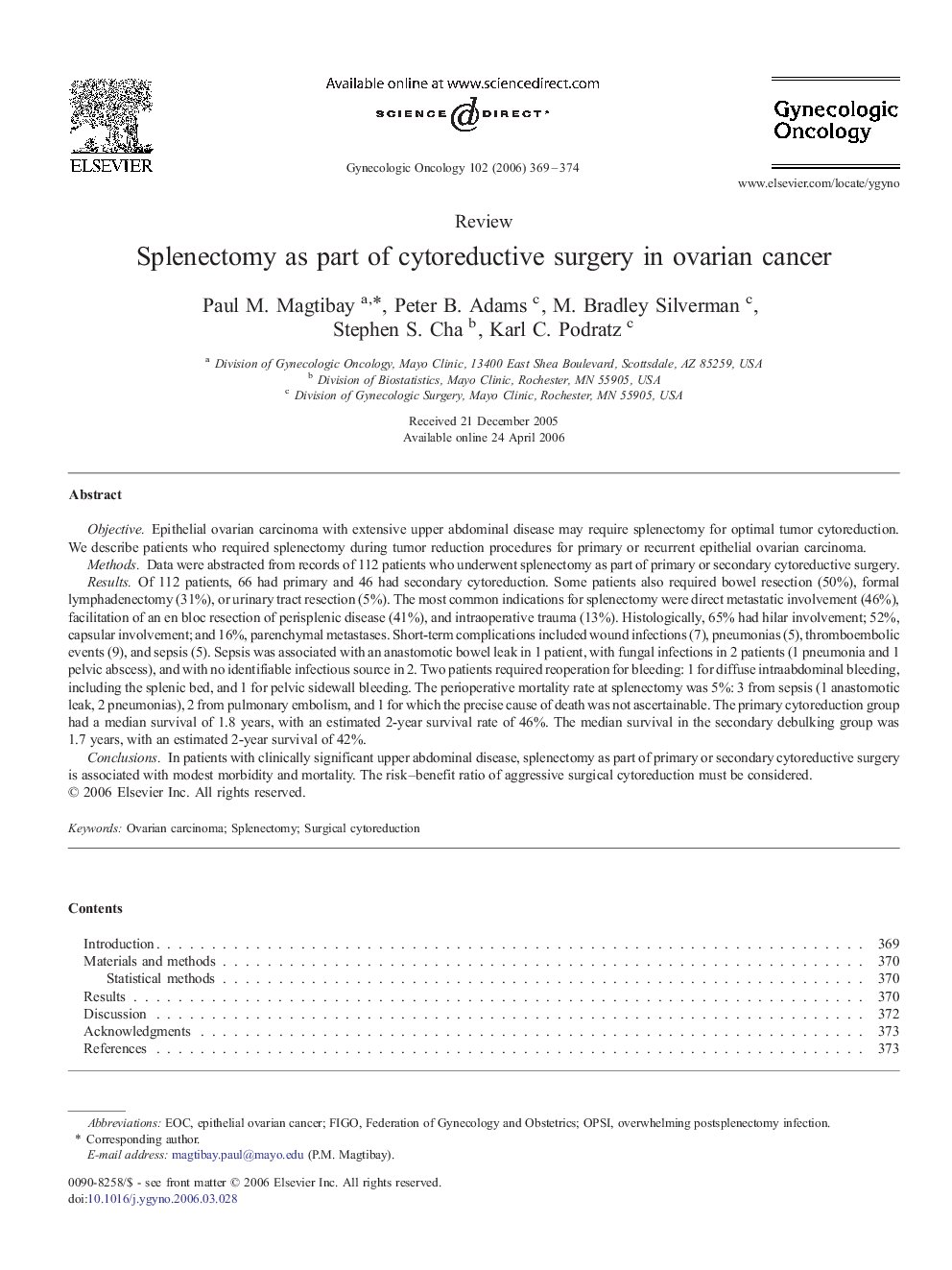| کد مقاله | کد نشریه | سال انتشار | مقاله انگلیسی | نسخه تمام متن |
|---|---|---|---|---|
| 3945108 | 1254248 | 2006 | 6 صفحه PDF | دانلود رایگان |

Objective.Epithelial ovarian carcinoma with extensive upper abdominal disease may require splenectomy for optimal tumor cytoreduction. We describe patients who required splenectomy during tumor reduction procedures for primary or recurrent epithelial ovarian carcinoma.Methods.Data were abstracted from records of 112 patients who underwent splenectomy as part of primary or secondary cytoreductive surgery.Results.Of 112 patients, 66 had primary and 46 had secondary cytoreduction. Some patients also required bowel resection (50%), formal lymphadenectomy (31%), or urinary tract resection (5%). The most common indications for splenectomy were direct metastatic involvement (46%), facilitation of an en bloc resection of perisplenic disease (41%), and intraoperative trauma (13%). Histologically, 65% had hilar involvement; 52%, capsular involvement; and 16%, parenchymal metastases. Short-term complications included wound infections (7), pneumonias (5), thromboembolic events (9), and sepsis (5). Sepsis was associated with an anastomotic bowel leak in 1 patient, with fungal infections in 2 patients (1 pneumonia and 1 pelvic abscess), and with no identifiable infectious source in 2. Two patients required reoperation for bleeding: 1 for diffuse intraabdominal bleeding, including the splenic bed, and 1 for pelvic sidewall bleeding. The perioperative mortality rate at splenectomy was 5%: 3 from sepsis (1 anastomotic leak, 2 pneumonias), 2 from pulmonary embolism, and 1 for which the precise cause of death was not ascertainable. The primary cytoreduction group had a median survival of 1.8 years, with an estimated 2-year survival rate of 46%. The median survival in the secondary debulking group was 1.7 years, with an estimated 2-year survival of 42%.Conclusions.In patients with clinically significant upper abdominal disease, splenectomy as part of primary or secondary cytoreductive surgery is associated with modest morbidity and mortality. The risk–benefit ratio of aggressive surgical cytoreduction must be considered.
Journal: Gynecologic Oncology - Volume 102, Issue 2, August 2006, Pages 369–374